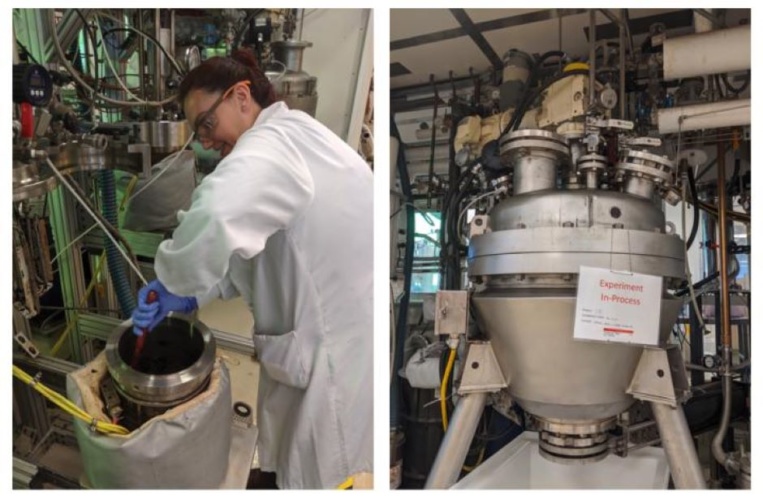
The teams from Lawrence Berkeley National Laboratory (Berkeley Lab) and Sandia National Laboratories report their findings published in ACS Sustainable Chemistry & Engineering.
"According to a recent report, by 2050 there will be 38 million metric tons of dry woody biomass available each year, making it an exceptionally abundant carbon source for biofuel production," said Carolina Barcelos, a senior process engineer at Berkeley Lab's Advanced Biofuels and Bioproducts Process Development Unit (ABPDU).
MORE FROM ENERGY & ENVIRONMENT
Efforts to convert woody biomass to biofuel are typically hindered by properties of wood that make it very difficult to break down chemically, added ABPDU research scientist Eric Sundstrom. "Our two studies detail a low-cost conversion pathway for biomass sources that would otherwise be burned in the field or in slash piles or increase the risk and severity of seasonal wildfires. We have the ability to transform these renewable carbon sources from air pollution and fire hazards into a sustainable fuel."
In a study led by Barcelos and Sundstrom, the scientists used non-toxic chemicals, commercially available enzymes, and a specially engineered strain of yeast to convert wood into ethanol in a single reactor, or pot. Subsequent technological and economic analysis helped them identify the necessary improvements required to reach ethanol production at $3 per gasoline gallon equivalent (GGE) via the process. The work is claimed to be the first-ever end-to-end process for ethanol production from woody biomass featuring high conversion efficiency and a simple one-pot configuration.
In a complementary study, led by John Gladden and Lalitendu Das at the Joint BioEnergy Institute (JBEI), a team fine-tuned the one-pot process so that it could convert California-based mixed woody biomass with the same level of efficiency as existing methods used to convert herbaceous biomass.
"Removing woody biomass from forests, like the overgrown pines of the Sierra, and from agricultural areas like the almond orchards of California's Central Valley, we can address multiple problems at once: disastrous wildfires in fire-prone states, air pollution hazards from controlled burning of crop residues, and our dependence on fossil fuels," said Das, a postdoctoral fellow at JBEI and Sandia.
Ethanol is used as an emissions-reducing additive in conventional petrol and diesel vehicles, typically constituting about 10 per cent of the fuel. Some specialty vehicles are designed to operate with higher ethanol compositions of up to 83 per cent. In addition, the ethanol generated from plant biomass can be used for making more complex diesel and jet fuels. Currently, the most common source of bio-based ethanol is sweetcorn kernels, which is easier to break down chemically, but requires land, water, and other resources to produce.
The researchers have shown that woody biomass can be efficiently broken down and converted into advanced biofuels in an integrated process that is cost-competitive with starch-based corn ethanol. These technologies can also be used to produce "drop-in" biofuels that are chemically identical to compounds already present in petrol and diesel.
The next step in this effort is to develop, design, and deploy the technology at the pilot scale. The Berkeley Lab teams are working with Aemetis, an advanced renewable fuels and biochemicals company based in the Bay Area, to commercialise the technology and launch it at larger scales once the pilot phase is complete.




Poll: Should the UK’s railways be renationalised?
I think that a network inclusive of the vehicles on it would make sense. However it remains to be seen if there is any plan for it to be for the...